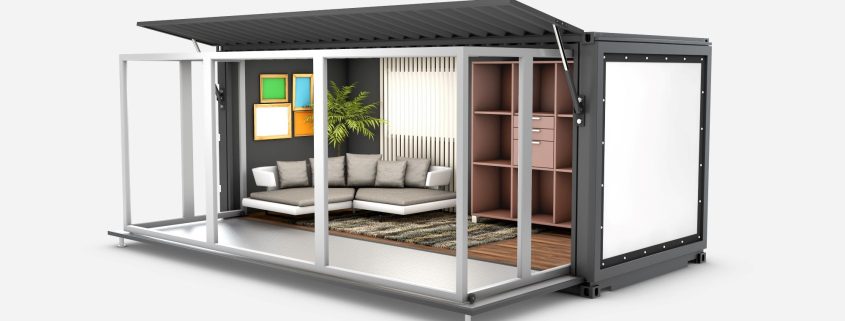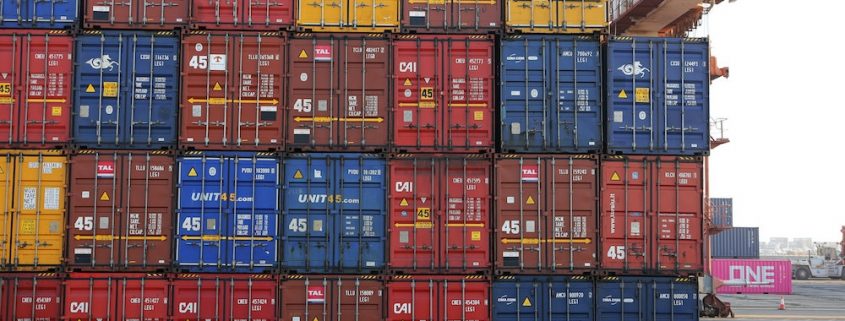Fun Stuff to Put in Your He/She Shipping Container
Man-caves, she-sheds, bachelor pads, personal studios – there have been many names for those little spaces that are special to us. And now, shipping containers are coming into style as an alternative to building, buying, or renovating a shed or area in your house. More people than ever are opting for a he/she shipping container to give these reliable Conex boxes a second life!
Repurposed shipping containers boast a lot of valuable qualities that are important to the success of outdoor structures, and their worth shifts with location. But regardless of who utilizes the container, everyone receives the same basic amenities:
- A durable, element-proof structure
- Secure steel walls
- An environmentally-friendly option
- Cost-effectiveness
- Extra space
- Pest-resistance
Any additional renovations made to the container, such as adding in windows or extra doors, may compromise certain aspects of the benefits that shipping containers offer, but with proper installation, it still present a superior alternative to traditional structures! It’s customizable nature and versatility make it a great foundation to build the he/she shipping container of your dreams!
If your New Year’s Resolution in 2023 is to construct a space like this for your peace of mind as an escape from the everyday in an effort to improve your mental health and quality of life, we highly recommend considering a shipping container as your structure – it even comes in two different sizes: 20 feet and 40 feet with a Hi-Cube and double-door option available for each size for optimum personalization.
But what about after you’ve decided on a shipping container? A lot of people have a vision in mind for their sacred space, but if you’re looking for some fun assets to include, here’s our suggestions for some little details that can make all the difference!
10 Fun Additions to Your He/She Shipping Container
- A Chalkboard Game Table
This one can be a party-pleaser across the board! The ability to write and draw directly on a piece of furniture is certain to entertain any young ones that come through your space, but it’s also particularly useful for keeping score during card, board, or drinking games, curating reading lists, and letting your creativity flow whenever the urge hits!
- A Murphy Bar
One of the primary features of a man-cave or she-shed is that it’s a smaller space to keep chores like cleaning minimal and the costs of decorating low but still with a high-satisfaction yield. Murphy bars are a great space-saver, as they function as both storage and tabletop room, and can be customized to fit right into whatever he/she shipping container theme you have in mind. Double win!
- Drinko Plinko
Who doesn’t love making an everyday task into a game? Pop open your bottle of beer and watch as the cap trickles down into a category that can be anything you can dream up! Make it a drinking game, a decision-maker, get some reusable labels and have it be different every time – the world is your oyster!
- A Multipurpose Foosball/Pool/Ping Pong/Picnic Table
Again, a big space-saver with more functions than one! There are several options for a multi-purpose table that supports pool, ping-pong, foosball, and just a regular table. That means several big items that would normally require oodles of space, can all be accessed in one! Games to play and a place to eat, craft, and hang out: there’s no loss!
- A (Not So) Secret Door
Especially if you choose to have the larger 40 foot container, there are tons of interior renovations that can make your he/she shipping container one-of-a-kind; you can even make it a bona fide he and she container by splitting it down the middle with a wall! To make it even cooler, we suggest putting in a secret door between the two “rooms” that can disguised as a bookshelf, floor to ceiling framed picture or poster, mirror, or pantry!
This is also a good idea for those who want a light/dark option. By adding windows or glass doors, one side can let in all the natural light you want, but for movies, gaming, or soft-light relaxation, you can keep the other half closed-off and as dark as you’d like.
- Lots of Natural Light
Speaking of natural light, however, it’s one this we do recommend putting into your he/she shipping container! If you’re looking for a place to get away and de-stress, or a studio for art, photography, or studying, natural light is a great addition and a wonderful way to connect with your surroundings, especially if your shipping container will be placed near natural areas with lots of greenery.
- Hanging Seats
Hanging seats can be a great way to create a unique conversation spot, a relaxing reading range, or personalized napping nook. They come in all sorts of fun shapes, sizes, materials, and styles, so the opportunity to find exactly what you want is there. Whether it’s a hanging tent, a hammock seat, a wicker egg chair, a swinging bench, or a full-sized bed, your he/she shipping container can host whatever will make you happiest!
- A Portable Projector
If you don’t want to buy a TV and then have it take up space on a stand or go through the steps to mount it so that it doesn’t come crashing down, a great alternative is investing in a portable projector. Most are able to connect to your phone, laptop, or gaming system with ease, so anything you can do on a TV, you can also do on this small, storable projector as well!
Bonus: you can even take it outside, so on nice evenings, you can enjoy the screen on the container’s exterior with friends and family.
- Repurposed Racks
Racks are a great ally when it comes to storage. Whether it be for hanging coats, purses, keys, leashes, photos, or mounting shot glasses on, there are plenty of repurpose-able materials that add a touch of unique personality! From hockey sticks, golf clubs, baseball bats, and foosball rods to ladders, faucet heads, railroad spikes, and doorknobs, practically everything that has lost its original function can be brought new life as something different!
- A Personalized Fridge
A staple in he/she shipping containers! Whether it houses specialty drinks, your favorite snacks, precious art supplies, medicines, or cosmetics, refrigerators are a great item to have that makes your cozy little ‘you’ space have everything you might want to have a good time. Paint it to fit your color palette, paste acrylic stickers on it to boast your initials, or design it to look like a money safe, an old-fashioned trunk, or another chalkboard!
Moon Has Your Next Shipping Container Project!
Moon Trailer Leasing has new and one-trip used shipping containers for rent or for sale, so whatever your need may be, Moon has a solution! Find your perfect he/she shipping container, or use it for a different project – it’s a multi-use tool for your creating pleasure!
If you are looking for shipping container rentals or purchasing options in the Kentucky or Southern Indiana, considering giving Moon Trailer Leasing a call. Our experienced team has decades of experience serving the needs of customers throughout Louisville and Lexington, Kentucky and in Clarksville, Jeffersonville, and New Albany, Indiana as well. Along with delivering clean, high quality, well-constructed units designed to meet your needs, our team is proud to offer competitive rates and top-notch customer service. Additionally, we also specialize in other related services including portable restroom and shower rentals, dumpster rentals, refrigerated container rentals and more. For additional details or to get a fast and easy quote for your project, give us a call at 502-776-2199. “Ask for the Moon, and get it!”











